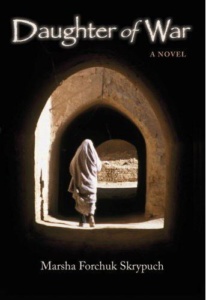On Saturday Nov 15th I had one reading at the Jasper Public library, so most of the day was free. I slept in til about 9am and then had breakfast and walked around town. I have to be careful with the walking because of the torn meniscus. The day before I left on this tour, I had an MRI on my knee. When I get back, I’ll get the results.
So I walked around town for the fresh air and the beauty. I popped in to the local bookstore and signed copies of my books there and have a great chat with the staff. Then I went back to the hotel. I took a taxi to the library because even though it was just a couple kilometers from my hotel, I didn’t want to risk walking there as I carried my very heavy book bag.
John from Sundog tours came to the library presentation, as did one of the people from the bookstore. The librarian warned me that there might not be a big crowd because the sun was shining, but there was actually a nice group of people. All of the chairs and cushions were filled. My estimate is about 14 people — kids and adults.
After the library reading, John took me to the internment camp. The local museum had heard about my visit and they had sent me some photos and a map about the internment camp. Agnes, the children’s librarian made copies for me. When John and I walked around the site, he compared the photos to what we could now see. It was very interesting and it was so informative to have John there pointing all these things out. A font of info. The librarian had also given me a note about a local couple from the genealogy society who had recently taken people on a tour of the internment camp, so I phoned and talked to them as well. It’s so greet that people here are so helpful. I am thrilled to have had the opportunity to come here and see for myself where my grandfather was interned. It is stunningly gorgeous here. It wouldn’t have been for him.
Tomorrow, I leave by bus at 7am back to Edmonton. No time even for coffee because no place close to here will be open yet, but I’ll manage.





















































































 A comfy pullout sofa in one room and a double bed in another. Best of all, a bathroom with a great toilet and a tub. We couldn’t figure out how to get the shower head to work so we each had a sponge bath and washed our hair, and used the new blow dryer.
A comfy pullout sofa in one room and a double bed in another. Best of all, a bathroom with a great toilet and a tub. We couldn’t figure out how to get the shower head to work so we each had a sponge bath and washed our hair, and used the new blow dryer.